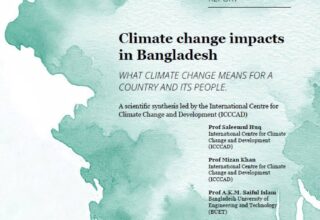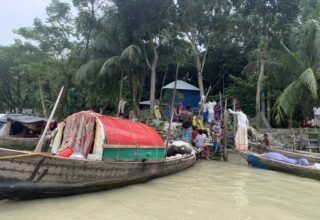I have written about the need to ramp up adaptation in order to avoid the worst impacts of human-induced climate change around the world, as lead author on adaptation for the Intergovernmental Panel on Climate Change (IPCC) for over a decade. So the Sixth Assessment Report of the IPCC containing that message was nothing new.
However, what was new and unexpected was the second part of the report on “Impacts, Adaptation and Vulnerability”, in which climate scientists document thousands of examples of extreme weather events as well as slow onset events, such as sea level rise, that are now causing immense harm. We are living in an era of unprecedented loss and damage from human induced climate change.
The second salient finding is that these impacts are no longer being felt in developing countries alone. The report provides evidence of unprecedented wildfires in California, Greece and Australia in the last few years – a harbinger of more extreme weather events to come. A record-breaking extreme weather event is now likely to happen somewhere in the world almost every week. This means that the impacts of climate change are causing significant loss and damage to human lives as well as ecosystems and infrastructure.
A third important theme of the report is the extent to which a number of adaptation mechanisms implemented around the world have either not been effective at all or have made things worse, due to maladaptation.
All governments and global institutions funding adaptation projects must pay close attention to this finding. This is especially important given that developed countries promised at COP26 in Glasgow to double their funding for adaptation in developing countries. It is clear from the report that allocating more money to doing the wrong things will cause more harm than good. There is an urgent need for all those involved in doing or supporting adaptation around the world to take stock and relearn how to do it more effectively.
One key lesson that has emerged from this analysis is that governments or international agencies like the United Nations and development banks have implemented many adaptation projects so far in a top down manner, without consulting or taking into account the knowledge of the vulnerable communities themselves.
It is from this lesson that the eight principles for locally-led adaptation emerged. For instance, one principle emphasises the importance of local institutions and communities having more direct access to finance and decision-making power in the design, implementation and monitoring of adaptation. Another calls for the need to invest in the long-term improvement of local capacity and institutions so that they can manage adaptation initiatives without forever being dependent on project-based donor funding. Reflecting the inherent uncertainty in adaptation, one principle stresses the need for learning, monitoring, financing and programming to be flexible and adaptive as well.
Many countries and international agencies have endorsed these principles but the proof of this particular pudding will be whether or not they will help the most vulnerable communities in the most vulnerable developing countries.
So the challenge ahead is not only about stepping up global efforts to adapt but also about rethinking how to do adaptation effectively.
Originally this Blog was published on April 11, 2022 at OECD-Development Matters.
About the author
Saleemul Huq, Director, International Centre for Climate Change and Development, Independent University Bangladesh.







